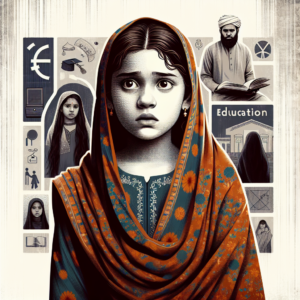Understanding the Global Problem of Child Marriage
Introduction
Child marriage is a pervasive global issue that affects millions of girls and boys, robbing them of their childhood, education, and opportunities. It refers to any formal or informal union where at least one of the spouses is under the age of 18. Despite significant progress over the years, child marriage continues to prevail in many parts of the world, perpetuating cycles of poverty, gender inequality, and violation of human rights. This article aims to shed light on the causes and consequences of child marriage, existing global efforts to combat it, and the importance of raising further awareness to eradicate this harmful practice.
Causes of Child Marriage
Child marriage is rooted in a range of social, economic, and cultural factors. Poverty plays a major role in driving families to marry off their daughters at a young age. In impoverished communities, marriage is often seen as a way to alleviate economic burdens and reduce the number of mouths to feed. Additionally, societal norms and gender inequality contribute to the persistence of child marriage. Deep-rooted beliefs around the value of girls and the perception of their worth primarily attributed to their reproductive capabilities perpetuate this harmful practice.
Consequences of Child Marriage
Child marriage has devastating consequences, robbing children of their right to a safe and healthy childhood. The physical, psychological, and social ramifications of child marriage are numerous. Young brides are more likely to experience domestic violence, sexual abuse, and risks associated with early pregnancies. Girls who marry early are often forced to drop out of school, impacting their educational prospects and limiting their opportunities for employment and empowerment. Similarly, boys who marry young are also affected, as they are unable to complete their education and face increased responsibilities at an early age.
Regional Disparities in Child Marriage
Child marriage is prevalent across regions, affecting millions of children globally. However, certain regions face higher rates and greater challenges in addressing this problem. Sub-Saharan Africa remains the region with the highest prevalence of child marriage, followed by South Asia. Poverty, lack of education, and patriarchal structures contribute to the persistent nature of child marriage in these areas. Despite efforts to reduce child marriage, progress has been slow, and concerted action is needed to achieve substantial change.
Global Efforts to Combat Child Marriage
Recognizing the severe impact of child marriage on human rights, gender equality, and development, global organizations and governments have launched initiatives to address this issue. The United Nations Sustainable Development Goals (SDGs), specifically SDG 5, aim to eliminate child marriage by 2030. Various strategies include promoting access to quality education, empowering girls through skills training, raising awareness, and reforming national laws to ensure legal protection for children.
Frequently Asked Questions (FAQs)
1. How many children are affected by child marriage globally?
Every year, an estimated 12 million girls are married before the age of 18.
2. Are boys also affected by child marriage?
Yes, while girls are disproportionately affected, boys are also impacted by child marriage. It is estimated that 115 million boys worldwide marry before the age of 18.
3. What are the health risks associated with early pregnancies?
Early pregnancies pose significant health risks for young girls. They are more likely to experience complications during childbirth, including preterm births and obstetric fistulas.
4. How can education help combat child marriage?
Education plays a crucial role in tackling child marriage. When girls are educated, they are more likely to delay marriage, have fewer children, and empower themselves economically.
5. Is child marriage legal?
Child marriage is illegal in most countries, but enforcement and implementation of legal frameworks vary. Advocacy, community engagement, and awareness are necessary to ensure effective enforcement.
6. How can individuals contribute to ending child marriage?
Individuals can raise awareness, support NGO initiatives, donate to organizations working to end child marriage, and advocate for policy changes in their respective communities and countries.
Conclusion
Child marriage remains a global issue that requires urgent and continued efforts to eradicate. Its causes are deeply rooted in poverty, gender inequality, and cultural norms. Its consequences reverberate throughout generations and perpetuate cycles of injustice. To combat child marriage, global initiatives must prioritize education, empowerment, and legal reform. The collective efforts of individuals, governments, international organizations, and communities are crucial in ensuring a world where every child can grow, learn, and thrive without being prematurely burdened by marriage.






















